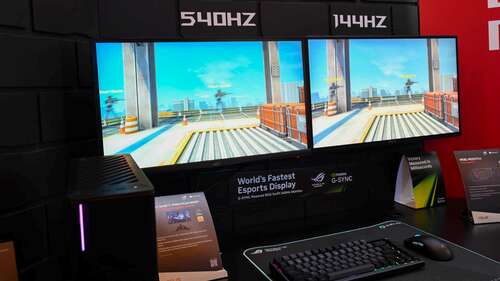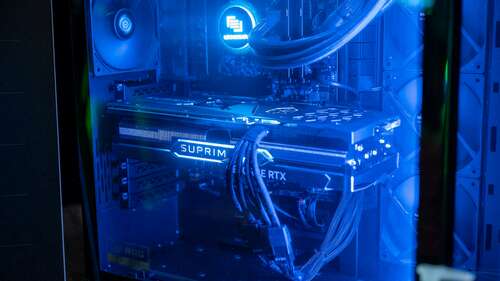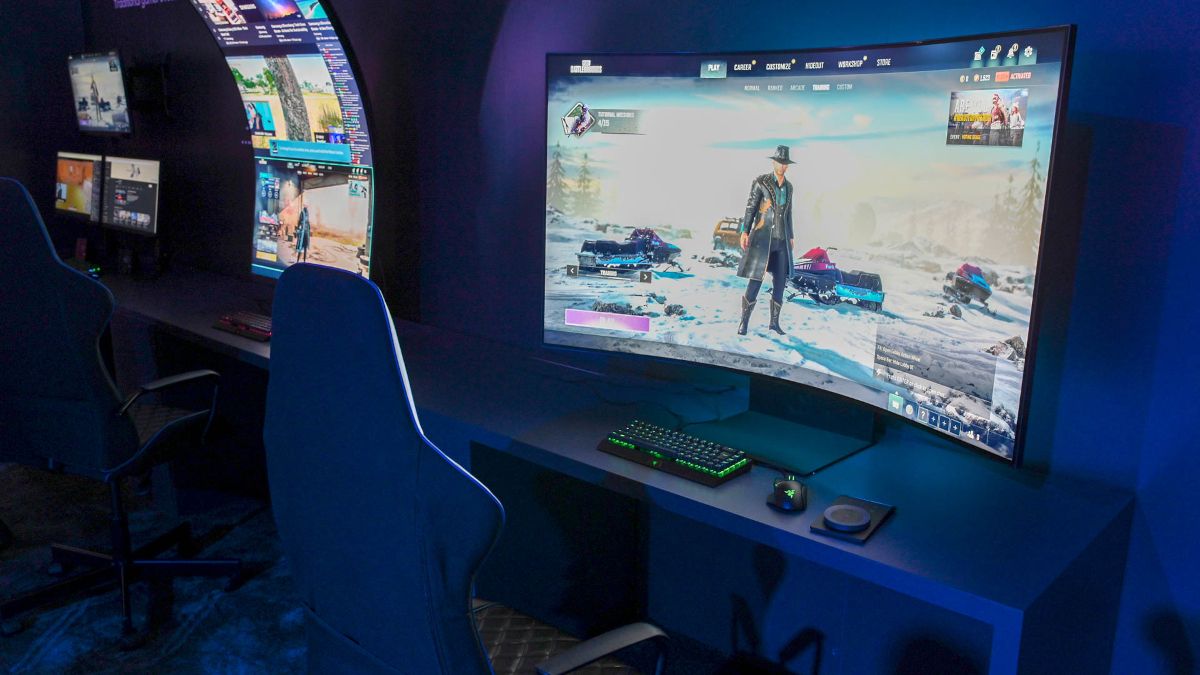Key Takeaways
- HRR screens cost more, so make sure you have the extra funds to invest in one.
- HRR screens offer better visuals, especially for gaming, with increased motion clarity and responsiveness.
- Make sure your GPU can handle the higher refresh rate and check if your cables and connections are compatible with the new monitor.
High refresh rate (HRR) screens of 120Hz or more are becoming commonplace on devices like laptops and smartphones, while HRR computer monitors abound. However, do you really need one?
If you’re wondering whether to have 120Hz (or 240Hz, or more!) on your next display, we have a few key considerations you should know about. Though this guide is aimed toward external monitors, most of the tips are valid for laptop screens as well.
Pricing: Are You Willing to Pay For More Hertz?
Unless you get a pretty good deal, it’s somewhat unavoidable that you’ll have to pay more for a display with a higher refresh rate. They simply cost more to make, so it’s expected that manufacturers will charge a premium.
So, the first thing to take into account is, well, your bank account. Do you have the extra funds to get an HRR screen instead of a regular one?
The money will get you a few perks. First of all, daily usage will look better, with more fluid animations and a responsive user interface. Then, if your GPU is powerful enough, you’ll finally experience all those additional frames when gaming. Finally, there’s the future-proofing aspect: you likely won’t need a need a new monitor any time soon.
Visuals: Do HRR Screens Look That Awesome to You?
Though it’s not exactly the same thing, I can tell my story as an example of why HRR screens can make a big difference. I use two phones: an old iPhone, with a 60Hz screen, for work, and a more recent Android mid-ranger, running at 120Hz, for personal stuff. And? I hate every second that I have to look at the iPhone’s display.
Now imagine that, but with a screen ten times larger or more. The difference is undeniable. For some content, like videos, it won’t be noticeable—since most content is recorded at 24 or 30 frames per second, they’ll look the same on HRR screens. For others, like games, it’s night and day. Not only will the game be much more responsive to your input, but there’s also a reduction in blur and an increase in motion clarity. This doesn’t just look better, if can improve your performance in games.
Processing Power: Is Your GPU Up to the Task?
There’s no magic here: if you’re going from 60 to 120Hz, you’re doubling the refresh rate, and you’ll need twice the processing to render enough frame to take advantage of every additional Hertz.
If your current GPU was already running close to its limit just to get 60fps your new display might be underused, since the graphics card won’t be able to output as many frames as the monitor is able to display. You may have to drop settings to get higher performance, and in some cases your CPU might actually be the limit on how many frames your system can produce.
That’s not the end of the world! Adaptive Sync technology (known as G-Sync in NVIDIA GPUs and FreeSync in AMD graphics cards) allows a screen to change its refresh rate to match the GPU output. So, even if you don’t get the whole 120Hz all the time, you’ll always get the most frames on-screen that your system can produce. A net win no matter which way you look at it.
Cards from NVIDIA’s 40 series onward have the third version of the Deep Learning Super Sampling (DLSS 3), which uses AI to create intermediate frames. This improves the frame rate while requiring less firepower: “guessing” what a frame should look like with AI is “easier” to the GPU than calculating and drawing it.
AMD’s version of DLSS is FidelityFX™ Super Resolution (FSR). FSR 3, the current iteration, also has the ability to create intermediate frames, but doesn’t require specialized AI hardware to do that. It also isn’t bound to the company’s cards: NVIDIA and Intel GPUs can also use FSR 3. AMD recommends Radeon models from the RX 6000 series onward, and GeForce from the 30 series onward, but RX 5000 Radeon cards and GeForce Series 20 are also supported by FSR 3.
Even with all that considered, if your GPU doesn’t make the cut, you’ll likely need to upgrade your graphics card so that the new monitor can shine. Desktop computers can use any of the best graphics cards available, while laptops are limited to external GPUs.
Cables and Connections: Is Your Setup Up to Date?
Chances are that, even if your GPU has the firepower required to light up your beautiful new display as fast as it should, the connection you’re using doesn’t make the cut. Remember to calculate the bandwidth you’ll need for the target resolution, refresh rate, and color depth.
Then, make sure the available ports support the data rate your monitor demands. That may include a change of cables: perhaps the HDMI version your GPU features doesn’t output enough bandwidth for your new monitor, but it has a DisplayPort or Thunderbolt connection that does.
Usage: What Will You Use the Monitor For?
It’s highly likely that you won’t take advantage of a higher refresh rate in games most of the time you’ll be using your new monitor. Chances are that you’ll spend hours scrolling through social media sites at 120Hz. And, honestly, that’s totally fine. There’s no shame in enjoying your X (formerly Twitter) feed smoother than ever.
If the thought of using an HRR display mostly to write a report or navigate through slideshows doesn’t seem appealing to you, perhaps you should consider investing in other upgrades. If reading PDFs at 120Hz sounds like a good idea, however, why not go for it?
Availability: Can You Forego Other Features?
If you absolutely want (or need) a display with a high refresh rate, you may need to give up on some other features. So it’s better to have your priorities defined from the beginning.
If having high dynamic range (HDR) in your monitor is of utmost priority, make sure the HRR one you choose supports this as well—and that your GPU handles the additional workload, and that the connections you use have enough bandwidth, and so on. If what matters most to you is having multiple input ports, remember to check that in the specs sheet. If you prefer curved screens, keep in mind that your options will be even fewer.
Also, take into account that each new function you add to the filter probably means higher costs. A flat, 21″, SDR monitor with a single HDMI port, even if it supports 120Hz, will have a way lower price than a curved, HDR, 34″ display with multiple HDMI and DisplayPort connections.
In the end, it’s all about balancing these considerations to find the product that best suits your needs. You might even find out that an HRR screen isn’t the priority you assumed it was.




